Wild Thing and Flip Dog: Here’s How to Keep Your Shoulders Safe (Photo Tutorial)
There’s a lot of confusion around the poses Wild Thing (Camatkarasana) and Flip Dog in the yoga community. Are they backbends? Are they Side Planks? Are they the same pose? The answer is: It depends. It depends on your...
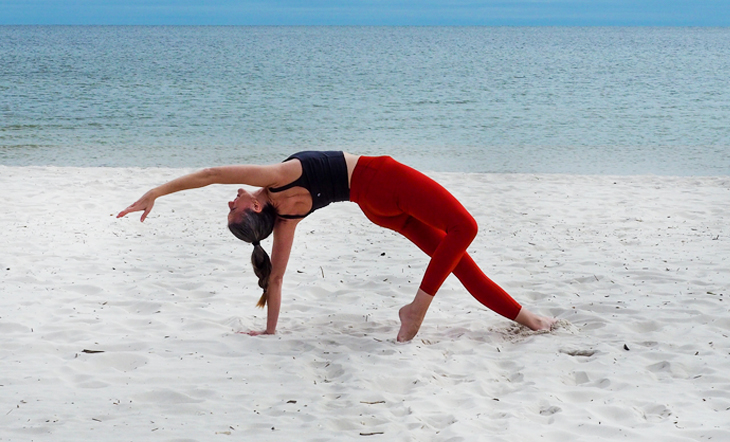
There’s a lot of confusion around the poses Wild Thing (Camatkarasana) and Flip Dog in the yoga community. Are they backbends? Are they Side Planks? Are they the same pose?
The answer is: It depends. It depends on your yoga teacher and school lineage. Clear as mud, right?
No matter what you call these poses, it’s important to enter them with intention and stability to keep your shoulders safe. For the purposes of this article and clarity, let’s distinguish between these two poses, and cover the nuances of each version.
Why Should You Care About the Shoulders in Wild Thing and Flip Dog?
Our shoulder joint is one of the most mobile joints in our body. It’s a ball-and-socket style joint, but the socket is relatively shallow. It’s shaped more like a plate than a bowl.
This gives our shoulders great freedom to move, which is helpful for activities throughout our day from reaching things on a shelf to giving someone a hug. But this range of movement also makes the joint and surrounding muscles vulnerable to injury.
Three main bones make up our shoulder joint: the humerus (upper arm), scapula (shoulder blade), and clavicle (collar bone). The primary muscles supporting the shoulder joint are part of the rotator cuff.
The rotator cuff is a group of four muscles that hug the scapula and provide support, protection, and movement. Some other muscles of the shoulder girdle are the deltoids, trapezius, rhomboids, triceps, and biceps.
How Can You Turn on Your Rotator Cuff to Prepare for Wild Thing and Flip Dog?
To bring awareness to the muscles of the rotator cuff, you can find them in a simple pose.
Let’s try it: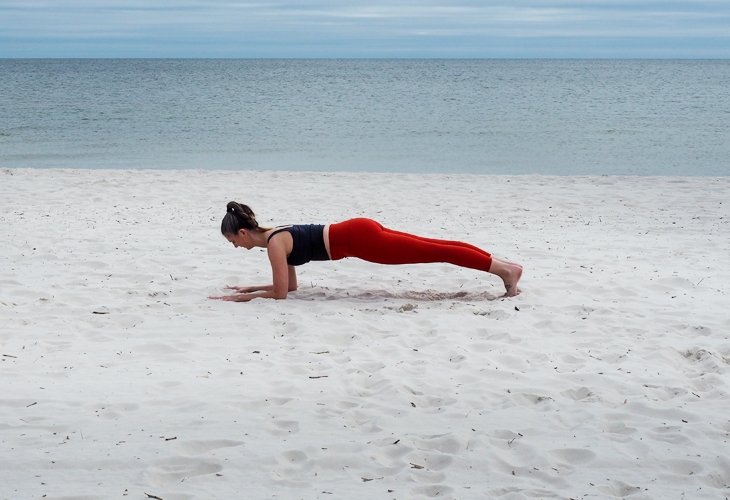
Did the muscles in your shoulder and back say “hello?”
Those are the muscles you want to use to support yourself when moving into either Wild Thing or Flip Dog.
To enter these two poses, there’s a lot of movement and rotation that happens through the shoulder.
Combine this movement with bearing weight in one arm and one or two feet, and you have the potential for a rotator cuff injury, similar to what baseball players experience after years of pitching.
But with a few shifts in alignment, we can safely use both these poses and enjoy the stretchy goodness and strength building they provide.
Here’s Your Step-by-Step Guide to Practice Wild Thing:
Ready to give it a try? Let’s start with Wild Thing:
1. Prepare
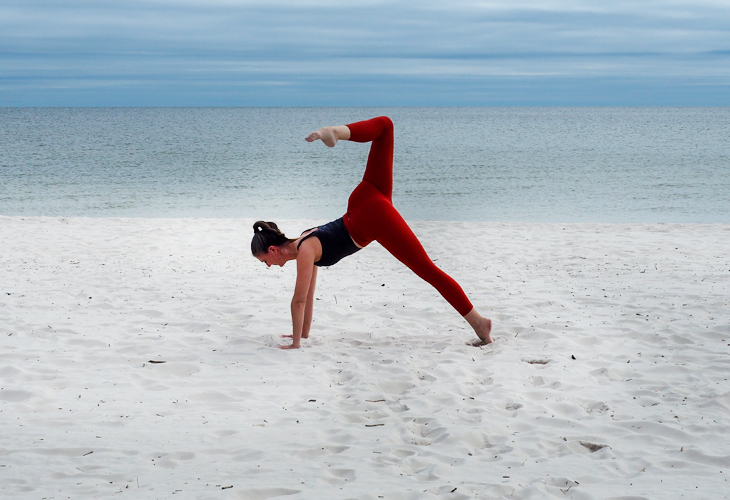
Starting in Side Plank or a seated position might be easier for alignment. But entry from Down Dog (Adho Mukha Svanasana) seems to be a more popular entry, so we’ll start the tutorial here.
Let’s try it:
Start in Downward Facing Dog Lift your right leg up in the air Bend your right knee and lift up through your right hip to send your knee toward the ceiling and your foot to the left At this point, keep your weight dispersed evenly between your hands and shoulders, and keep your right shoulder level with your left Come onto the ball of your left foot Bring our gaze forward between your hands Shift your weight forward until your shoulders stack directly over your wrists This shift in alignment is key to keeping your shoulder girdle safe and the movement controlled
The Secret to a Perfect Downward Dog and Plank Pose (Hint: It’s All About Alignment!)
2. Rotate
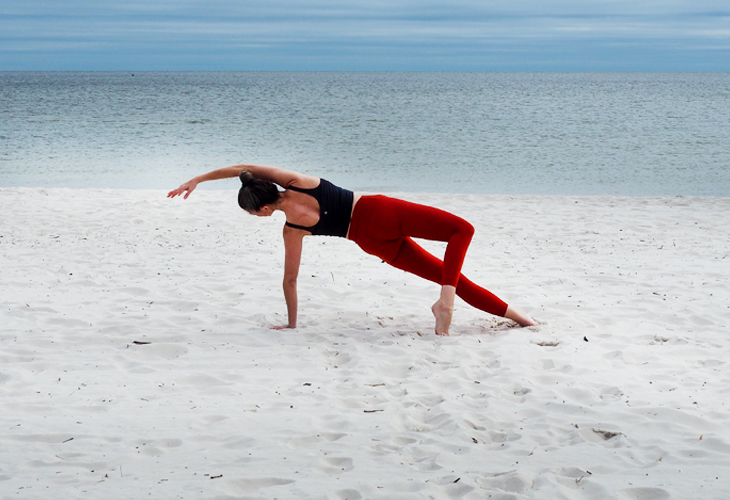
There’s a lot of simultaneous movement that happens here, so move as slowly and carefully as you need.
Let’s try it:
Come onto the pinkie toe side of your left foot Shift your weight into your left hand Slide your right arm up, and then overhead, as you lift your right shoulder toward the sky Bring the ball of your right foot to the ground behind you for balance Keep your right heel lifted Ground down through your left hand and stabilize through your left shoulder girdle Your left arm, shoulder, and foot are the foundation for this pose, and are set up similar to Side Plank (Vashistasana)3. Lift
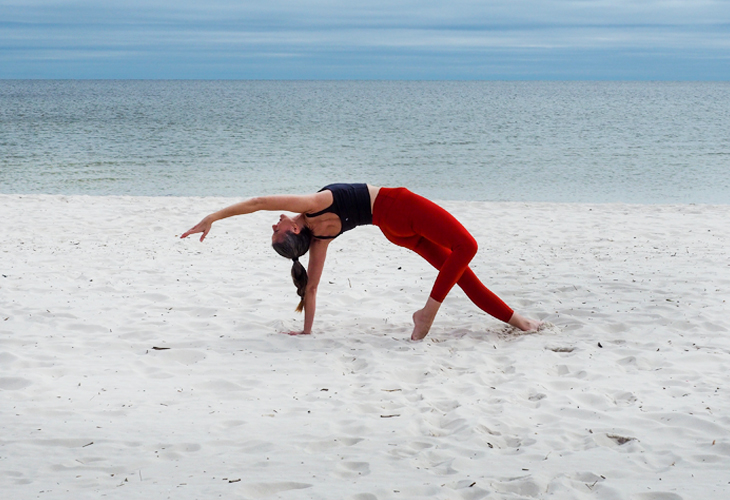
Once you have a solid foundation, you can find more lift and come into the full expression of the pose.
Let’s try it:
Press down into the ball of your right foot to lift your hips up Your hips will stay angled, with your right hip point higher than your left Lengthen through your chest, lifting it toward the ceiling to create a backbend Extend your right arm long and gaze toward your hand Keep your right leg bent, and your left leg long Stabilize along the back of your body and spine and allow the front to open Come out of the pose how you came in, finding a Side Plank and then returning your right hand to the ground, before moving back to Down Dog or your next pose
Are stiff shoulders preventing you from opening? Practice These 6 Yoga Poses to Find Relief
Here’s Your Step-by-Step Guide to Practice Flip Dog:
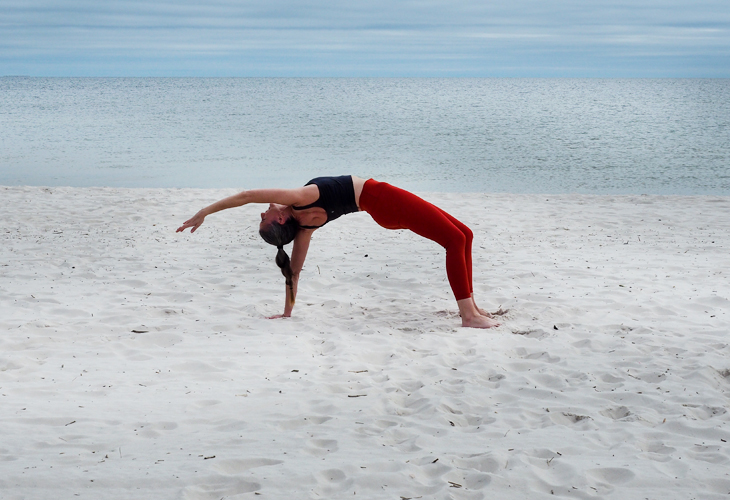
Flip Dog builds on Wild Thing, but the set-up is a bit more like Wheel Pose (Urdhva Dhanurasana) than Side Plank.
Your Intelligent 7-Step Guide to Access Wheel Pose (Urdhva Dhanurasana) Safely
Because of the continued rotation and opening through the hips, it can be a bit more difficult to keep the shoulder joint supported. So stay supported in Wild Thing if you prefer.
1. Ground Both Feet
In this step, we’ll continue the lifting and opening movement from above.
Let’s try it:
Start in Wild Thing as described above Drop your right heel to the ground Bend your left leg and place the sole of your left foot on the floor Line your knees and feet up so they are no wider than your hips The outside of your feet should be parallel to the long sides of your mat Continue to rotate your hips open so that your hip points are even and open to the sky Reach your right arm long overhead Press down into the ground with your left hand and lift through the back of your left shoulder to keep from collapsing To come out, extend your left leg, shift your weight back into your left foot, and find a Side Plank before moving onto your next poseThe Takeaway on Wild Thing and Flip Dog
Once you find stability in either of these poses, you can play around a bit with the placement of your floating arm. You can bring your hand to your chest to give you something to lift into or bring your hand to the nape of your neck to accentuate the shoulder opening.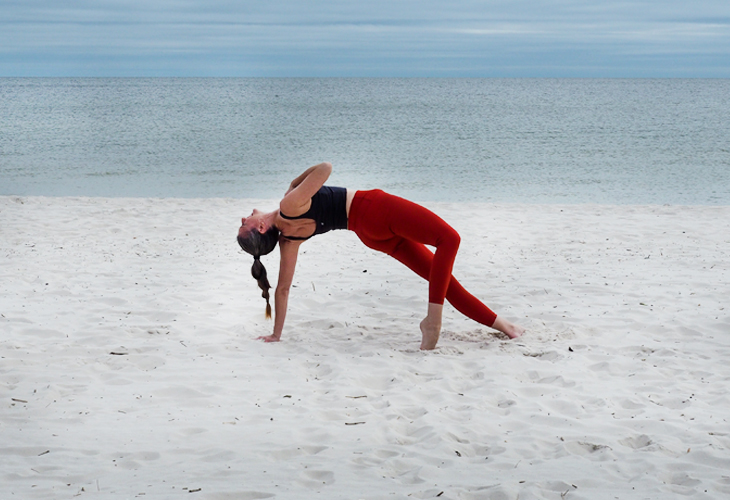
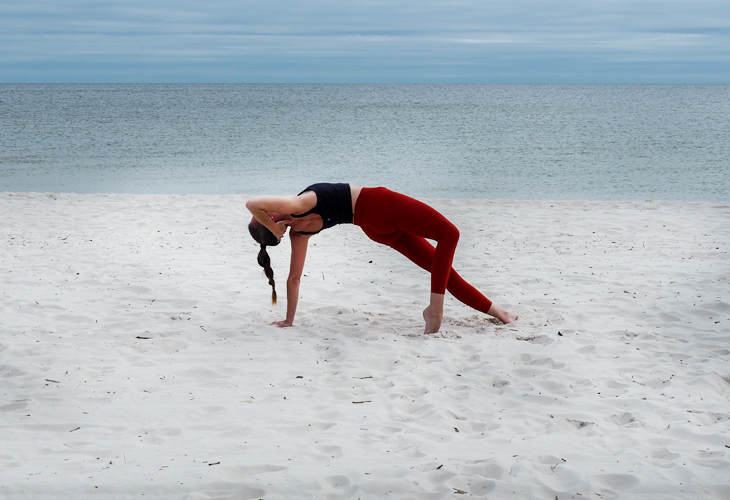
There’s no pressure to do or love either of these poses. If these postures make your shoulder a bit glitchy, then try a supported alternative.
Air Out Your Heart With These 7 Beginner-Friendly Backbends
Some yoga teachers use Wild Thing and Flip Dog interchangeably. Others treat these poses differently and use the one they want depending on a class theme, such as backbending versus strength building.
So follow along with the pose called for, and incorporate these alignment cues to keep your body safe and your shoulder healthy.
Ready for Some More Backbending?
Practice Open Heart with Leah Sugerman on YA Classes!

With Leah Sugerman
4 Classes | Intermediate

 JaneWalter
JaneWalter 








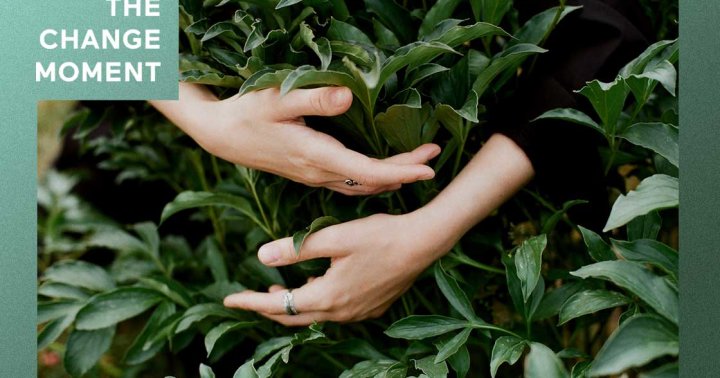










.jpg&h=630&w=1200&q=100&v=6e07dc5773&c=1)






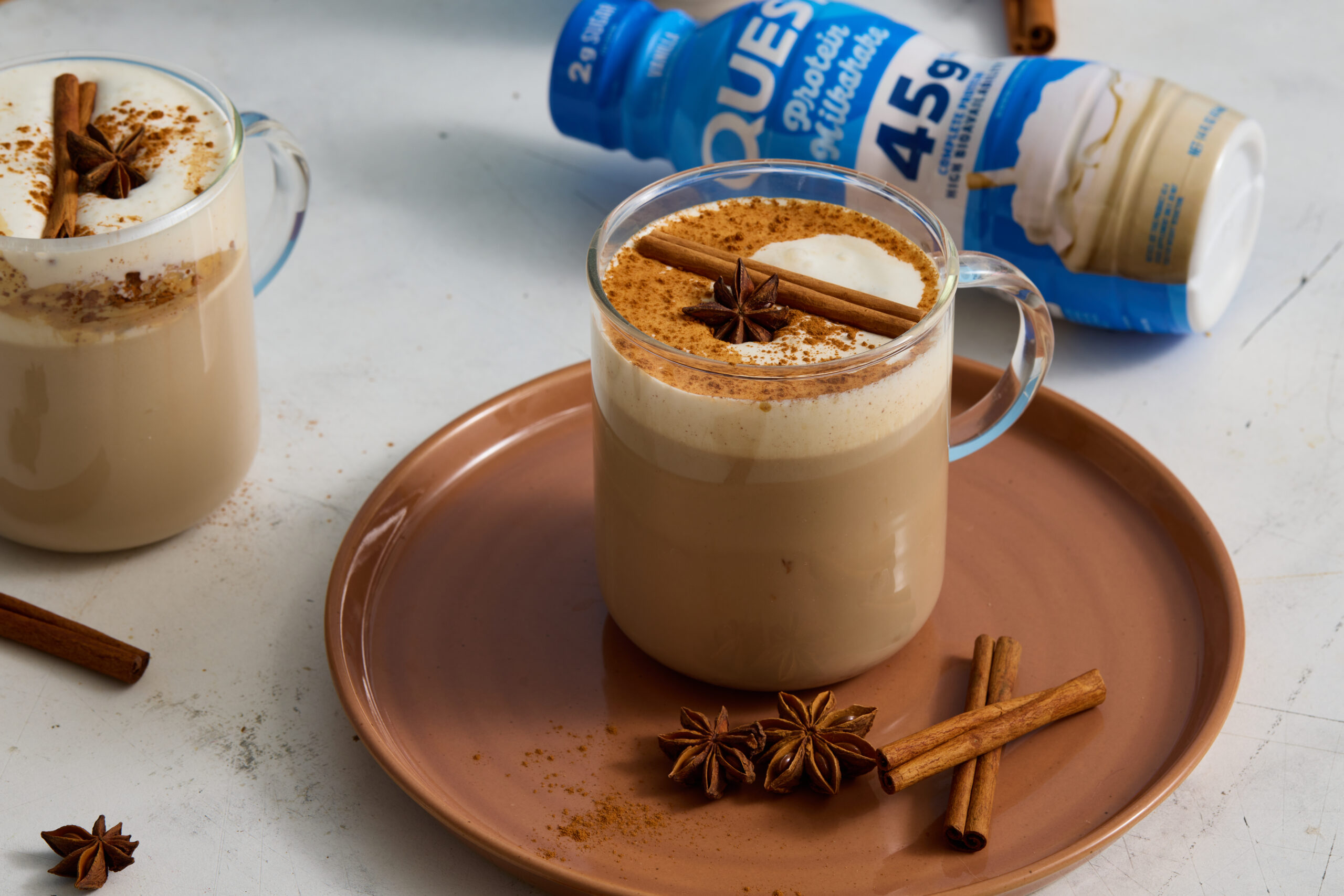



.jpg&h=630&w=1200&q=100&v=f776164e2b&c=1)

